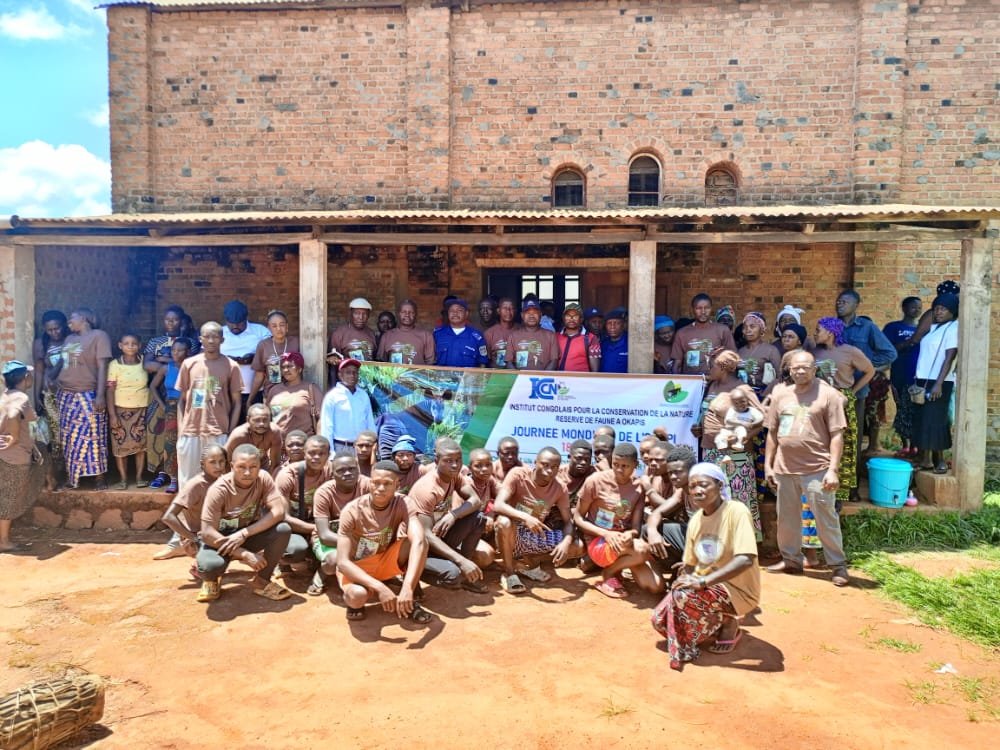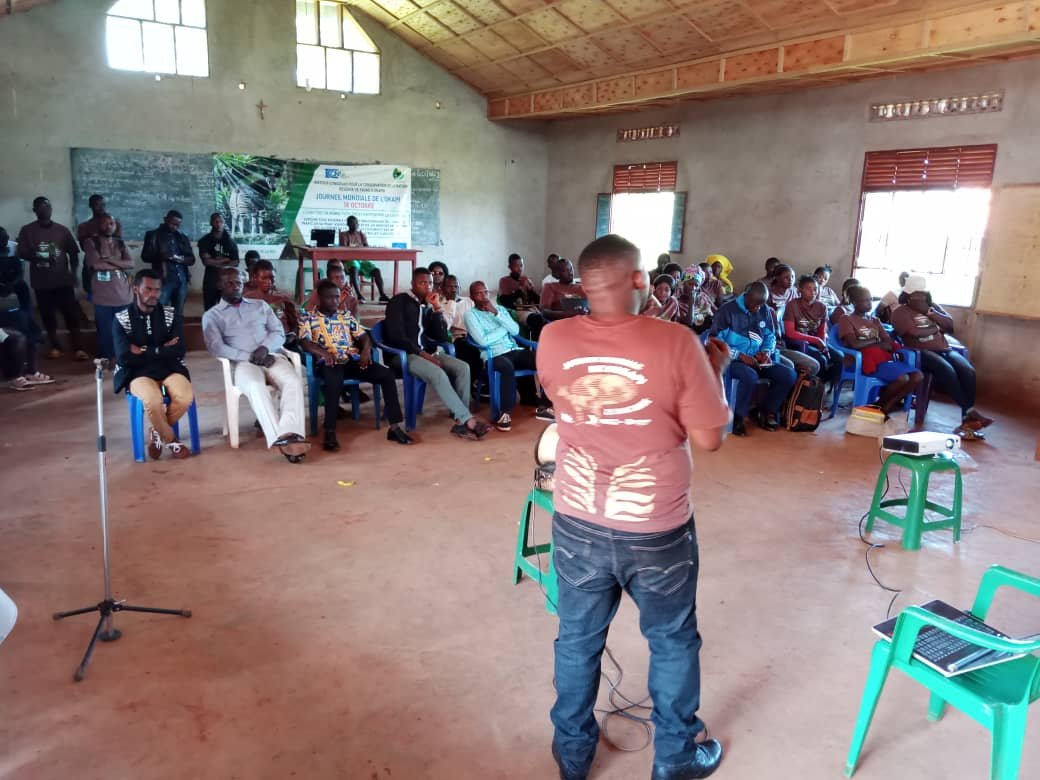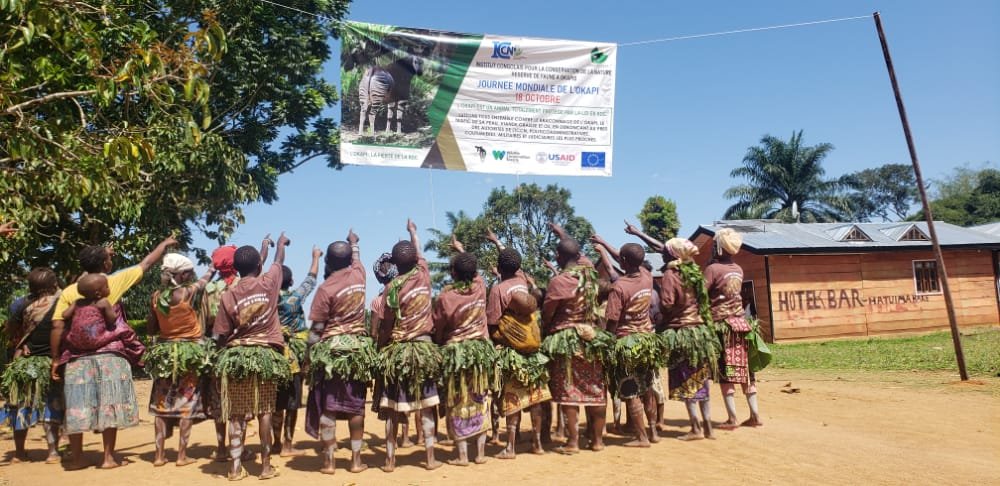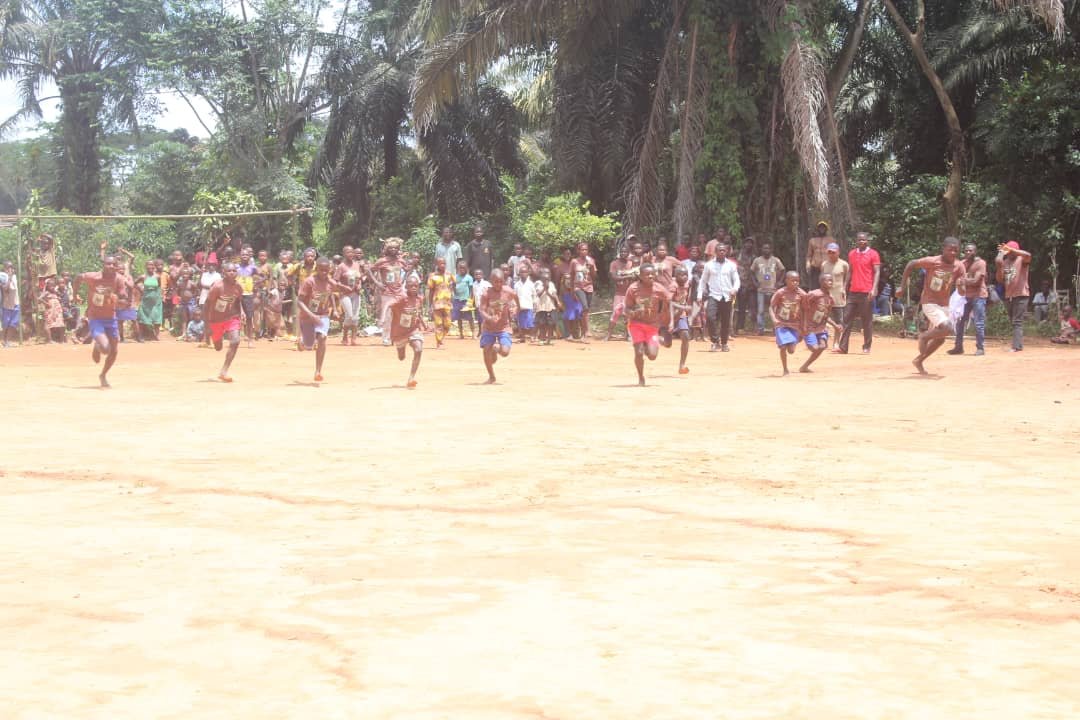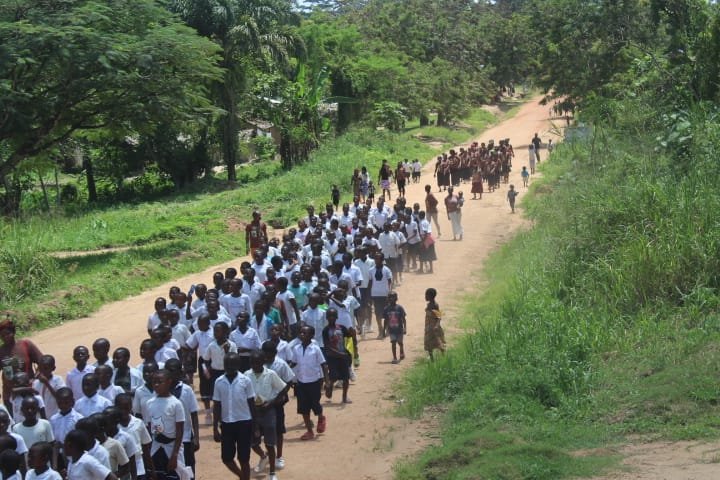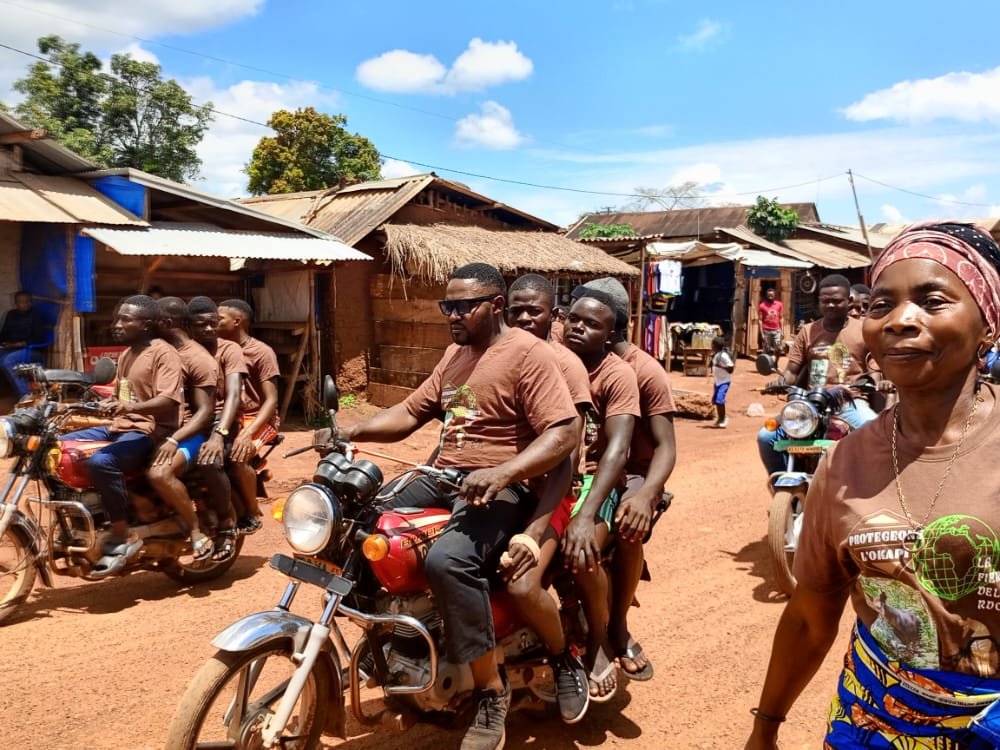World Okapi Day 2022
World Okapi Day (October 18th) has quickly grown to be a large celebration around the Reserve, and we continue to focus on educating local communities on the okapi’s values and importance while urging them to fight against various threats against the animal and its habitat. This year several of those messages include combatting the alarming trend in armed poaching of okapi, and the illegal trade in fat, bones and skin.
This year’s celebrations occurred in eight villages around the Okapi Wildlife Reserve: Epulu, Mambasa, Niania, Wamba, Mungbere, Watsa, Nduye and Dingbo. We even received reports of additional events and media coverage in larger cities including Bunia, Kisangani and Kinshasa!
Each village’s celebration began with a short conference and presentation with local political authorities and community leaders on okapi’s ecological and cultural value in the region and throughout DRC. After the presentations, parades through each town led by women’s groups and associations, motorcycles and taxi drivers drew community members out of their homes to join the fun and excitement. The parades concluded in large, open areas, football fields and grassy airstrips where events continued.
M’monga speaking to local authorities in Watsa.
Several speeches led by the local authorities and community chiefs focused on okapi and urged communities to practice sustainable agriculture for their own benefit and to protect the forest for okapi and other animals, helping to instill passion and excitement for an animal only found in the DRC.
The indigenous Mbuti and Efe were given platforms to speak on their relationship with the forest and okapi, and share their traditional dance and culture with new members of the community, and how protecting okapi also helps protect their traditional way of life.
Indigenous Efe in Mungbere.
To engage schoolchildren, our educators organized races where participants and winners won prizes including payments for school fees to stay in school (and engaged with our conservation programming), and additional school supplies and radios. Football matches were also organized between women’s groups and alliances.
Secondary schoolchildren competed in races with prizes including school fees and school supplies.
Parades drew many from their homes as they traveled to the open areas where activities were arranged.
Between the eight villages and towns, we estimate we reached about 12,000 people based on rough headcounts in each village. Regardless of the exact number of people we reached, we know we continued to build upon the excitement and passion to protect the symbol of conservation in DRC and are excited to hear our message is spreading across the country and the world!
Parades were led by women’s groups and motorbikes.

